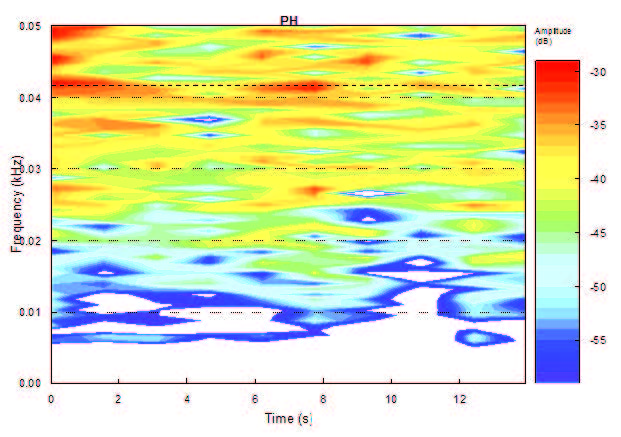Analysis of drip water in an urban karst cave beneath the Hungarian capital (Budapest)
DOI:
https://doi.org/10.3986/ac.v45i3.3440Keywords:
cave drip water, hydrochemistry, karst, Pál-völgyi Cave System, time series analysis, urban pollutionAbstract
Our geological heritage is increasingly threatened by anthropogenic activity. This is especially true of the Pál-völgyi Cave System beneath Budapest. It is among the 150 longest and at the same time most endangered cave systems in the world. The aims of the study were (i) to set up a monitoring system in the cave, (ii) to track the daily changes in the quality and quantity of drip water, and (iii) to determine the exposure of the cave. Monitoring was conducted at two locations in a shallow area next to a fracture zone (site name: TG) and one lying in a tectonically less disturbed, geologically more homogeneous location 20 m deeper (site YC). The data obtained in respect of 13 variables were assessed using descriptive statistics, principal component- and periodicity analyses. At first glance, it was apparent that the eight water quality parameters differed in quantity between the two sites. Furthermore, using principal component analysis it was shown that in the fractured-shallow setting, anthropogenic activity (external urban pollution, e.g. de-icing, decrease of land cover etc.) is the driving process determining water quality. At the tectonically less fractured site (YC) external influences originating above ground may be added to the natural karst-forming processes. The assessment of drip intensity and electric conductivity again highlighted the differences between the sites in terms of their reaction to precipitation. With regard to diurnal periodicity, although pH and Eh indicated a mature periodic behavior at both sites (covering 56−65 % of the total observed time), at site TG electric conductivity displayed diurnal periodicity over only 21 % of the total time, compared to 56 % at YC. All results pointed towards a conclusion that at site YC daily periodicity and water quality are much more connected to natural processes, while at site TG anthropogenic external influences suppress these.
Key words: cave drip water, hydrochemistry, karst, Pál-völgyi Cave System, time series analysis, urban pollution.
Analiza prenikle vode v urbani kraški jami pod madžarsko prestolnico (Budimpešta)
Naša geološka dediščina je vse bolj ogrožena zaradi človekovih dejavnosti. To še posebej velja za jamski sistem Pál-völgyi pod Budimpešto. Sodi med 150 najdaljših in hkrati najbolj ogroženih jamskih sistemov na svetu. Cilji raziskave so bili (i) vzpostaviti sistem spremljanja izbranih parametrov v jami, (ii) spremljati dnevne spremembe kakovosti in količine prenikle vode, in (iii) določiti izpostavljenost jame onesnaženju. Raziskava je bila izvedena na dveh lokacijah v plitvem območju blizu razpoklinske cone (ime vzorčnega mesta: TG) in na tektonsko manj pretrti in geološko bolj homogeni lokaciji 20 m globlje (ime vzorčnega mesta: YC). Pridobljeni podatki 13 spremenljivk so bili obdelani s pomočjo opisne statistike, analize glavnih komponent in periodičostno analizo. Na prvi pogled je bilo očitno, da se je osem parametrov kakovosti vode kvantitativno razlikovalo med obema mestoma. Poleg tega se je s pomočjo analize glavnih komponent pokazalo, da je mesto v plitvem pretrtem območju pod velikim vplivom antropogenih aktivnosti (urbano onesnaženje, npr. sredstva proti zmrzovanju, zmanjšanje pokrovnih plasti, itd.), ki vplivajo na kakovost vode. Na tektonsko manj preoblikovanem mestu (YC) se zunanji vplivis površja mešajo z naravnimi kraškimi procesi. Ocena intenzivnosti kapljanja in električne prevodnosti je ponovno izpostavila razlike med vzorčnimi mesti v smislu njunega odziva na padavine. V zvezi z dnevno periodičnostjo je vzorčno mesto TG kazalo dnevno periodičnost več kot 21 % celotnega časa, mesto YC 56 %, čeprav sta pH in Eh izkazali zrelo periodično obnašanje (56−65 % celotnega opazovanega časa) na obeh mestih. Vsi rezultati kažejo na sklep, da je na mestu YC dnevna periodičnost in kakovost vode veliko bolj povezana z naravnimi procesi, medtem ko jih na mestu TG antropogeni zunanji vplivi zadušijo.
Ključne besede: jamska prenikla voda, hidrokemija, kras, jamski sistem Pál-völgyi, analiza časovne vrste, urbano onesnaževanje.
Downloads

Downloads
Published
How to Cite
Issue
Section
License
Authors guarantee that the work is their own original creation and does not infringe any statutory or common-law copyright or any proprietary right of any third party. In case of claims by third parties, authors commit their self to defend the interests of the publisher, and shall cover any potential costs.
More in: Submission chapter




